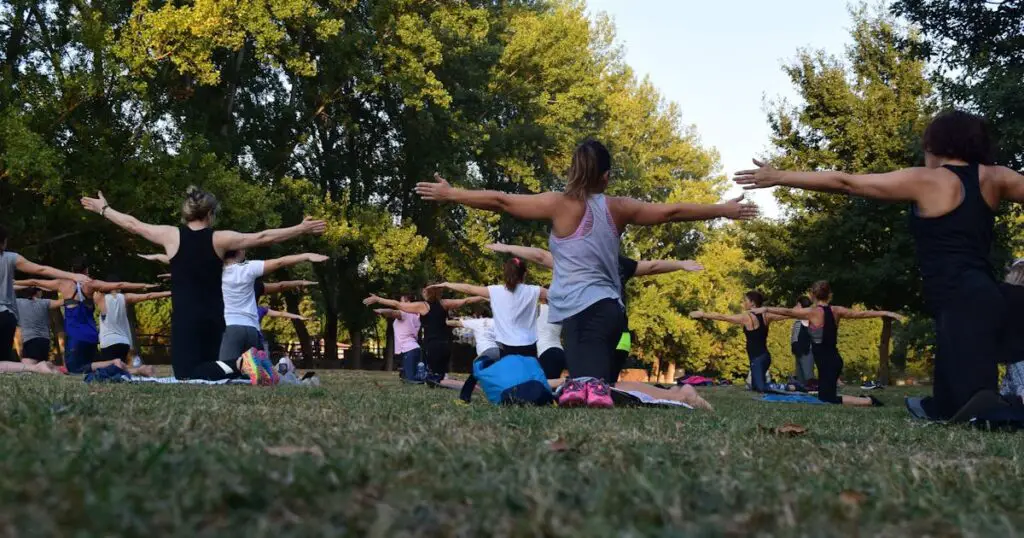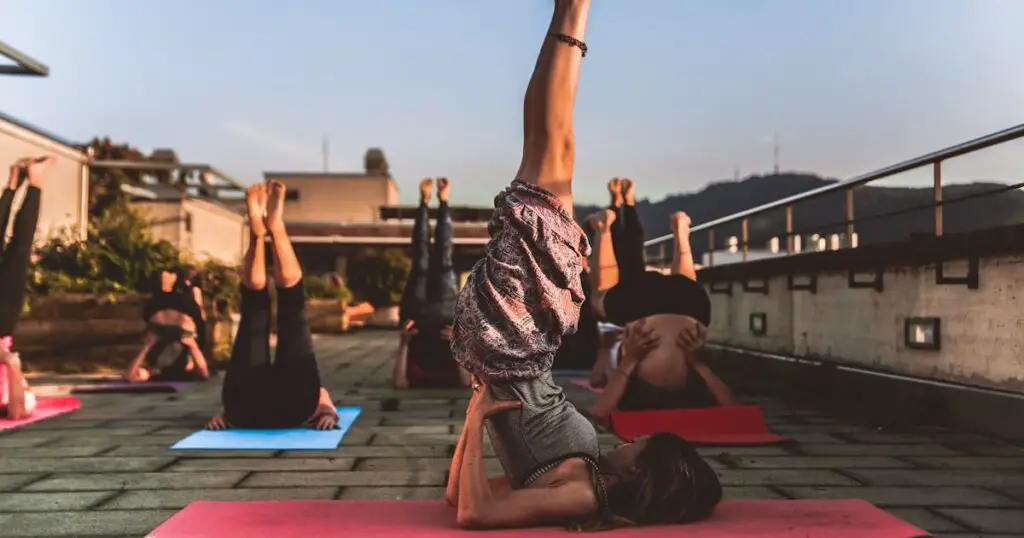Key Takeaway: Practicing yoga regularly not only significantly enhances flexibility but also fosters strength, better posture, and reduced stress, contributing to a holistic approach to physical and mental well-being.

Are you looking to improve your flexibility and overall well-being? Look no further than yoga! This ancient practice has gained popularity in recent years for its numerous physical and mental benefits. But one of the most significant advantages of yoga is its ability to improve flexibility.
In this article, we will explore how yoga can help you become more flexible, both physically and mentally. We will delve into the various poses that are known for promoting flexibility, as well as other surprising benefits that yoga has to offer. So roll out your mat, take a deep breath, and let’s dive into the world of yoga!
Strike a Pose for Strength
While many associate strength training with lifting heavy weights at the gym, yoga offers a different approach to building strength. The various poses in yoga require you to engage and hold specific muscles, which ultimately leads to increased muscle strength and endurance.
Yoga poses that focus on strengthening the core, such as plank pose and boat pose, also engage the muscles in your arms, legs, and back. This full-body engagement not only improves muscle tone but also increases flexibility. As your muscles become stronger, they can move through a wider range of motion without feeling strained or restricted.
Yoga for Flexibility
As mentioned earlier, one of the most well-known benefits of yoga is its ability to improve flexibility. In fact, many people turn to yoga specifically for this reason. Practicing yoga regularly can increase joint mobility and range of motion by gently stretching and lengthening muscles throughout the body.
Poses such as downward-facing dog, pigeon pose, and seated forward fold are known for their ability to target tight areas of the body, such as the hamstrings, hips, and spine. As you continue to practice these poses and hold them for longer periods, you will notice an increase in your flexibility over time.
Better Posture From Yoga
Another way that yoga promotes flexibility is by improving your posture. Many of us spend long hours sitting at a desk or hunched over our phones, which can lead to poor posture and muscle imbalances. However, certain yoga poses can help correct these imbalances by targeting specific muscles that support proper posture.
For example, poses like cobra pose and upward-facing dog help to open up the chest and stretch the muscles in the front of your body, counteracting the hunched position we often find ourselves in. Other poses such as Warrior 1 and tree pose can strengthen the muscles in our back and core, providing support for a more upright posture.
Breathing Benefits
Breathwork is an essential component of yoga and plays a significant role in improving flexibility. When practicing yoga, you are encouraged to focus on deep, mindful breathing. This type of breathing helps to relax tense muscles and increases oxygen flow throughout the body, allowing for deeper stretches.
Moreover, deep breathing during yoga also helps to calm the mind and release tension from both body and mind. The more relaxed you are, the easier it is to move through poses and explore your body’s full range of motion.
Less Stress, More Calm
In today’s fast-paced world, stress and anxiety have become prevalent in our daily lives. Thankfully, yoga offers a natural remedy for these modern-day woes. By incorporating mindfulness, movement, and breathwork, yoga can help reduce stress levels and promote feelings of calmness and well-being.

When we are stressed or anxious, our muscles tend to tense up, making it harder for us to move freely. Yoga helps release this tension by promoting relaxation of the muscles through various poses and breathing techniques. As a result, our bodies become more supple and flexible while our minds become calmer.
FAQs: How Does Yoga Improve Flexibility?
How often should I practice yoga to improve flexibility?
It is recommended to practice yoga at least three times a week to see noticeable improvements in your flexibility.
Can I still do yoga if I am not flexible?
Absolutely! Yoga is for everyone, regardless of their current level of flexibility. With consistent practice, you will notice significant improvements in your range of motion and overall flexibility.
Are there any other benefits of practicing yoga besides improving flexibility?
Yes, there are numerous physical and mental benefits associated with regular yoga practice, including increased strength, improved balance and coordination, reduced stress and anxiety, better sleep quality, and more.
Conclusion
Yoga is an excellent way to improve both physical and mental well-being. Its emphasis on mindful movement, breathwork, and relaxation promotes flexibility, strength, and overall health. By incorporating yoga into your routine a few times a week, you can experience the many benefits it has to offer.
So why not give it a try and see for yourself how yoga can improve your flexibility and enhance your life?



Leave a Comment
You must be logged in to post a comment.